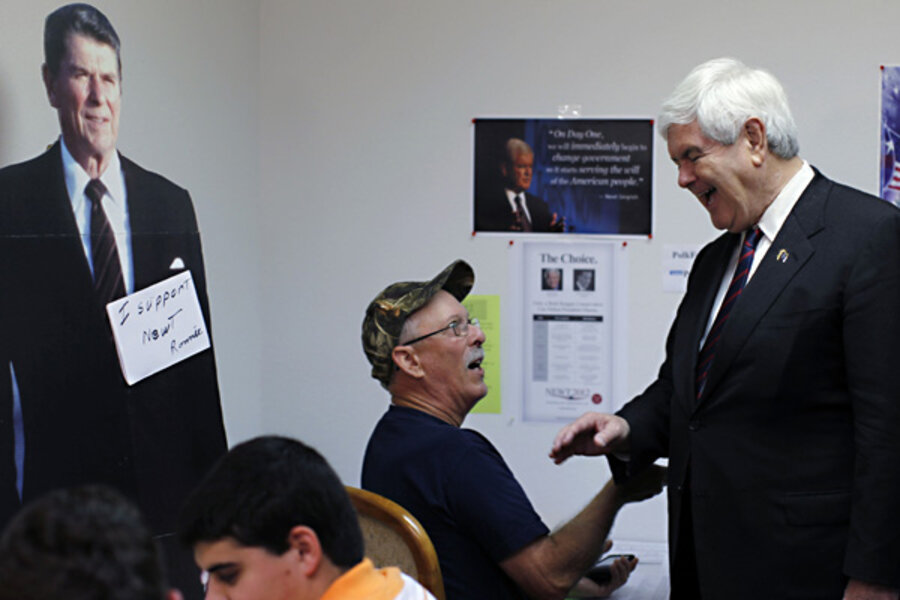The problem with the 'trickle down' theory
Loading...
[The following puts together a bunch of stuff I've been posting about here at OTE over the past few months...it's time to start thinking about these ideas in terms of new models to replace the old, worn out ones...]
The trickle-down, deregulatory agenda—what I have called YOYO, or “you’re on your own” economics—presumes that the growth chain starts at the top of the wealth scale and “trickles down” to those at the middle and the bottom of that scale. Problem is, that’s not worked.
Here’s a better model. In the midst of the 1990s boom, which lifted the earnings and incomes of middle and low-wage workers much more so than the 1980s or 2000s cycles, Larry Mishel and I started talking about “wage-led demand growth.” We meant that a much better way to generate robust, lasting, and broadly shared growth is through an economically strengthened middle class.
At the most basic level, this growth model is a function of customers interacting with employers, business owners, and producers. A recent article by successful venture capitalist Nick Hanauer very compellingly describes this interaction:
I’ve never been a “job creator.” I can start a business based on a great idea, and initially hire dozens or hundreds of people. But if no one can afford to buy what I have to sell, my business will soon fail and all those jobs will evaporate.
That’s why I can say with confidence that rich people don’t create jobs, nor do businesses, large or small. What does lead to more employment is the feedback loop between customers and businesses. And only consumers can set in motion a virtuous cycle that allows companies to survive and thrive and business owners to hire. An ordinary middle-class consumer is far more of a job creator than I ever have been or ever will be.
How does this dynamic interaction show up in the macroeconomy? Economist Alan Krueger, currently serving as Chair of the President’s Council of Economic Advisers summarized these findings in a recent speech, in a section on the consequences of economic inequality.
Less robust (or debt-financed) consumption. Seventy percent of the US economy is accounted for by consumer spending, so if that part of GDP lags, economic growth slows. It is also the case that the propensity to consume out of current income is higher among lower-income households (i.e., compared to wealthier households, they’re more likely to spend than save their income).
Based on an estimate of these relative propensities and the large shift in the share of national income that accrued to the top 1 percent over the past few decades, Krueger calculates that aggregate consumption could be 5 percent higher in the absence of such large income shifts. Applying rules of thumb on the relationship between aggregate growth and jobs, and assuming both economic slack and that this income was not simply replacing demand elsewhere in the economy, this extra consumption growth could reduce unemployment by 1.75 percentage points, implying about 2.6 million more people with jobs.
[As consumption is 70% of GDP, and each point of GDP above trend reduces unemployment by half a point, this calculation is .7*.5*5%, or 1.75%.]
Krueger cites an important caveat about this type of calculation. In the face of stagnant earnings in the 2000s, many in the middle class borrowed to make up—or more than make up—the difference, in which case middle-class consumption did not fall as much as it would have absent this leverage. To point out that this method of improving middle class living standards is both unsustainable and extremely risky is an obvious understatement.
Inequality and longer term growth. Krueger also points to recent research showing that “in a society where income inequality is greater, political decisions are likely to result in policies that lead to less growth.” Economist Mancur Olson also hypothesized about this relationship decades ago.
As more income, wealth, and power is concentrated at the top of the income scale, narrow coalitions will form to influence policy decisions in ways less likely to promote overall, or middle-class, well-being, and more likely to favor those with disproportionate power and resources. In the current economics debate, we clearly see these dynamics in a tax code that bestows preferential treatment on those with large amounts of assets, like capital gains and stock dividends, relative to wage earners.
Trickle-down economics, inequality, and incomes. Another piece of evidence with implications for rebuilding a strong middle class comes from new work by economists Emmanuel Saez et al. As shown in the figures from their paper (see here), they use international evidence from a wide variety of advanced economies to examine two key links in the logic of the supply-side chain.
First, they look at the relationship between the top marginal income tax rate in these countries and the change in income inequality. They find a strong negative correlation: in countries like ours that cut the top marginal tax rate, income is a lot more skewed (and note that this refers to pretax income, so the result is not a direct function of the tax policy changes).
But the critical question for supply-side is whether these high-end marginal tax rate reductions lead to faster income growth (we’ve already seen that they lead to more income inequality). The bottom figure shows that they do not. Real per capita income growth across these countries is unrelated to the changes in tax rates.
The above points emphasize an economic rationale for a growth model more favorable to the middle class. More broadly shared growth would not only score higher on a fairness criterion; it would provide a more reliable and durable structure for overall growth itself. It is no accident, in this regard, that the era of heightened inequality coincides with the arrival and persistence of what I’ve called “the shampoo economy:” bubble, bust, repeat.
But our emphasis on growth should not crowd out that of fairness, and in this regard, some of the most important recent work in this area has stressed the relationship between inequality and mobility, the latter being the extent to which individuals’ and families’ economic positions change over the life cycles. Again, I will briefly summarize the relevant findings.
Economic mobility. Some policy makers, often in seeking to dismiss the inequality problem, argue that the US has enough income mobility to offset increased inequality. We may start out further apart, they argue, but we change places enough that it doesn’t matter. This argument fails, however, both in terms of logic and evidence. The existence of mobility cannot offset increased inequality; for that to occur, mobility itself must be accelerating. There is no evidence to support such acceleration and some new, high-quality work suggests a slight decline in the rate of mobility.
The US has considerably less income mobility than almost every other advanced economy. In particular, as stressed in a recent New York Times article, parental income is a stronger predictor of the success of grown children in the U.S. relative to other advanced nations—i.e., we have less intergenerational mobility than other nations.
Putting some of these themes together, I have hypothesized that there are causal linkages between inequality and immobility. To the extent that those who have lost income share in recent years suffer diminished access to the goods, services, and general living conditions that would enhance their mobility, we would expect to see economic results like those cited above.
Here, I’m thinking about everything from access to quality education, starting with pre-school (such early educational interventions have been shown to have lasting positive impacts), to public services, like decent libraries and parks, to health care, housing, and even the physical environment. The new research linking mobility and inequality may well find that as society grows ever more unequal, those falling behind are losing access to the ladders that used to help them climb over the mobility barriers they faced.
Hanauer’s feedback loop is key to this model. It’s not just that we need growth to reach the middle class. It’s that when it does, the growth is more durable. There’s room for a lot more research here, but this feels like the right economic model for the present and the future.
Update: Should have noted that David Madland of the Center for American Progress wrote an excellent piece on this topic and CAP is going to be doing more work on it in the near future (Krueger’s speech was at CAP, kicking off the project).






